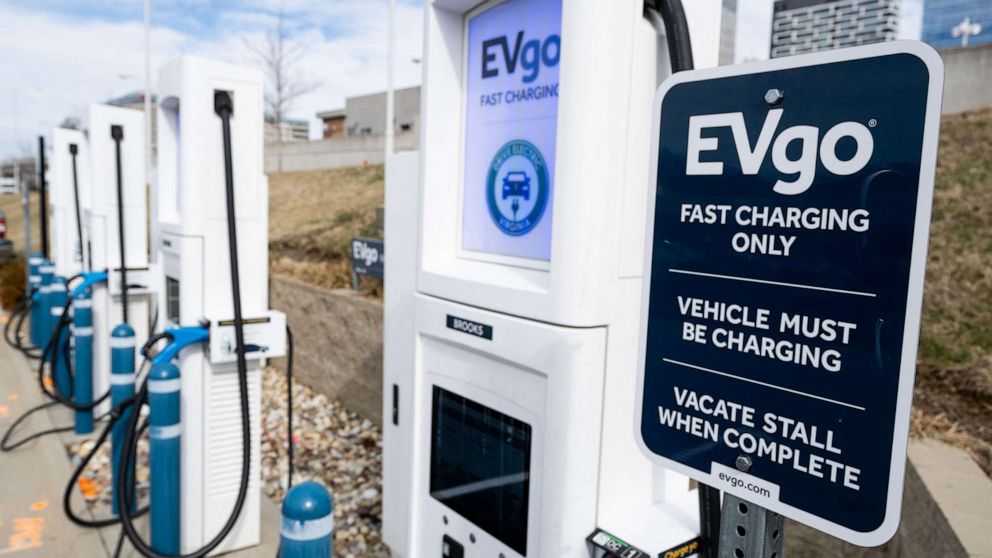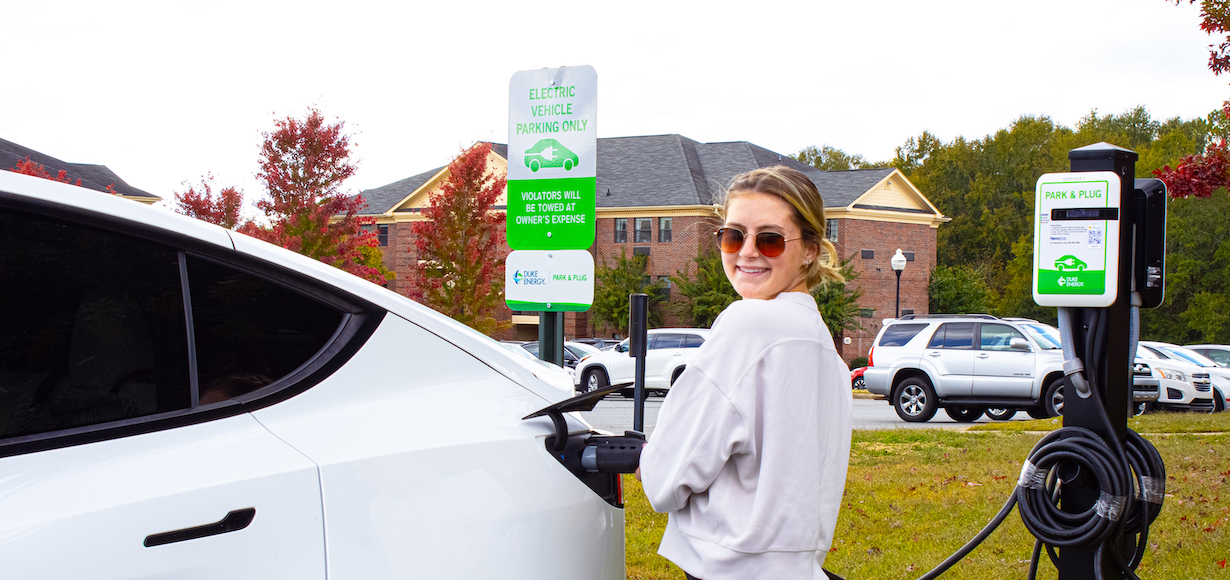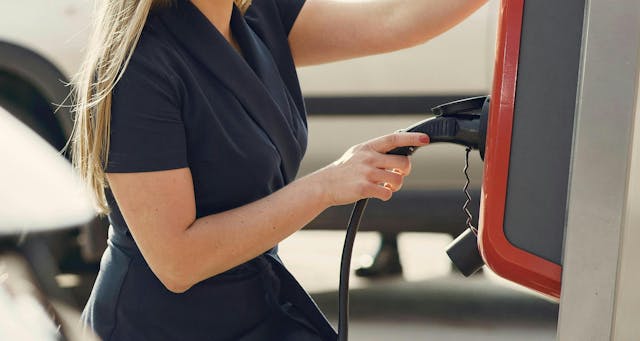What’s Driving the Growth of EV Infrastructure? Buy EV Charging news for Key Updates
What’s Driving the Growth of EV Infrastructure? Buy EV Charging news for Key Updates
Blog Article
Top EV Charging Information: Trick Updates on Infrastructure and Innovation

Recent Innovations in Fast-Charging Technology

Furthermore, innovations in battery innovation, consisting of enhanced thermal monitoring systems and greater energy density batteries, complement fast-charging abilities. These advancements reduce the danger of battery degradation during quick charging, guaranteeing durability and performance for EV proprietors.
Additionally, the integration of smart charging solutions is boosting individual experience, enabling real-time monitoring and vibrant pricing models. EV Charging news. This flexibility permits vehicle drivers to optimize billing times and expenses based on grid need
As car manufacturers remain to buy fast-charging networks, the partnership between market stakeholders is crucial. Partnerships between charging station carriers and automotive producers are leading the way for extensive coverage, ultimately fostering a more robust EV ecosystem. These developments are essential in sustaining the shift to lasting transportation.
Government Efforts for Billing Expansion
Federal government efforts play a critical role in the expansion of electrical lorry (EV) billing framework, facilitating the transition to sustainable transport. Numerous federal and state programs are being executed to enhance charging access, reduce the economic worry on consumers, and promote the fostering of electric cars.
Notably, the united state federal government has allocated substantial financing via the Infrastructure Investment and Jobs Act, which allocates $7.5 billion for EV charging network growth across the country. This funding is targeted at deploying thousands of brand-new charging terminals, especially in underserved areas, thus dealing with array stress and anxiety among possible EV purchasers.
In addition, numerous states are passing regulations to enhance the permitting process for charging station installments, which is crucial for speeding up deployment. Rewards such as tax credit reports and rebates for both consumers and businesses are likewise being introduced to motivate the installment of charging infrastructure.
Furthermore, public-private collaborations are progressively ending up being an emphasis, leveraging personal financial investment to complement government financing. These campaigns highlight a joint method crucial for building a detailed and reliable EV charging network, eventually adding to a greener and more sustainable future.
Ingenious Battery Solutions Enhancing Performance
Revolutionizing the landscape of electrical lorry (EV) modern technology, innovative battery options are significantly enhancing effectiveness and efficiency. Developments in battery chemistry, specifically with lithium-sulfur and solid-state batteries, are bring about enhanced power thickness, which enables longer varieties and faster billing times. These brand-new battery kinds have the prospective to outmatch traditional lithium-ion batteries by supplying higher capacities while decreasing weight, thus enhancing general automobile effectiveness.
In addition, growths in battery administration systems (BMS) are enhancing power usage and prolonging battery life expectancy. Intelligent algorithms monitor battery health and efficiency, enabling real-time adjustments to billing and releasing procedures. This not only enhances the efficiency of the battery yet additionally makes certain an extra reliable and lasting energy source for EVs.
Additionally, the integration of reusing modern technologies is attending to the environmental influence of battery manufacturing and disposal. Advancements in second-life applications for EV batteries are facilitating her response their use in power storage systems, adding to a round economic climate.
As these innovative battery remedies proceed to progress, they promise to change the EV market, making electric lorries a lot more available and attractive to a more comprehensive audience while sustaining worldwide sustainability objectives.

Partnership In Between Automakers and Charging Networks
Recognizing the vital requirement for a durable charging infrastructure, automakers are progressively working together with charging network suppliers to improve the EV possession experience (EV Charging news). These partnerships intend to develop a smooth billing environment that profits consumers and supports the transition to electrical cars
Major automobile brands are joining pressures with well-known billing networks to broaden their charging terminal insurance coverage, making certain motorists have access to practical and dependable billing options. For example, collaborations with networks like ChargePoint and Electrify America enable automakers to incorporate billing services directly right into their cars' navigating systems, assisting customers to the local stations and providing real-time schedule updates.
Additionally, these collaborations usually lead to the growth of fast-charging this article innovations that significantly minimize the time required to charge an EV. By pooling resources and proficiency, car manufacturers and charging networks can introduce much faster, producing solutions that satisfy the expanding demand for electrical mobility.
In enhancement, joint campaigns may additionally lead to more standardized billing methods, which can minimize customer confusion and promote more comprehensive EV fostering. In general, these calculated partnerships are critical in developing a reliable and user-friendly billing infrastructure that satisfies the demands of an increasing electric car market.
Difficulties Encountering EV Billing Framework
As the electric car market remains to expand, numerous obstacles are surfacing that hinder the advancement of a detailed billing infrastructure. One of the main challenges is the inadequate variety of billing terminals, specifically in country and underserved city like it locations. This void develops array anxiousness amongst potential EV purchasers, hindering them from making the button.
In addition, the absence of standardization in billing innovation makes complex the facilities landscape. Variations in plug types and charging speeds can create complication for customers and raise functional intricacies for charging network operators. The combination of billing terminals into existing electrical grids poses substantial obstacles. Lots of areas encounter ability restrictions, requiring substantial financial investments in grid upgrades to fit enhanced demand.
Another pressing issue is the high price connected with the installation and upkeep of charging terminals, which can be a barrier for both public entities and exclusive services. Finally, governing hurdles and zoning constraints can delay the release of charging framework, impeding progression in expanding crucial solutions. Attending to these difficulties will be important for fostering a robust EV ecological community that supports the shift to lasting transport.
Final Thought
To conclude, the ongoing developments in EV billing modern technology, supported by considerable government efforts and cutting-edge battery remedies, are crucial for the expansion and effectiveness of electric automobile facilities. Cooperations between car manufacturers and billing providers additionally improve terminal protection, resolving the growing demand for available charging options. Despite challenges that persist within the EV billing landscape, these growths indicate a positive trajectory towards an extra effective and sustainable electric vehicle ecosystem.
Innovations in billing infrastructure have actually led to the growth of ultra-fast battery chargers capable of delivering up to 350 kW of power, dramatically lowering charging times. Variations in plug kinds and billing speeds can produce confusion for users and increase functional complexities for charging network drivers.In final thought, the ongoing advancements in EV billing modern technology, sustained by considerable government efforts and ingenious battery solutions, are critical for the growth and efficiency of electrical lorry facilities. Collaborations in between automakers and billing companies further boost station insurance coverage, resolving the expanding demand for easily accessible charging choices. Despite difficulties that persist within the EV charging landscape, these growths symbolize a positive trajectory in the direction of a more effective and lasting electric car ecosystem.
Report this page